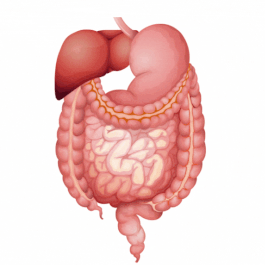Duodenal Switch Surgery Dallas, Fort Worth, Mansfield &
Plano, TX
- Home
- Weight Loss Surgery
- Biliary Pancreatic Diversion with Duodenal Switch

How is Duodenal Switch Surgery Performed?
Duodenal Switch is performed under general anesthesia in two stages; in the first phase, around 80 percent of the stomach is removed using sleeve gastrectomy, leaving behind a small tube-like portion. The second step bypasses large parts of the intestine by connecting the end of the intestine to the duodenum. A biliary pancreatic diversion limits how much food a person can consume, and reduces nutrient absorption. In patients with a previous sleeve gastrectomy, only the second portion is performed. Dr. Sachin Kukreja, Dr. Elizabeth Hooper, and Dr. Rebecca Barr with their team at DFW Bariatrics and General Surgery ensures that the patients get comprehensive postoperative care and assistance to ensure a safe, and durable long-term result.
If you think you are right for Orbera Gastric Balloon and want to reduce 30 plus pounds, speak with an expert at DFW Bariatrics and General Surgery to evaluate the benefits and possible risks.
Is Duodenal Switch Procedure Right for You?
- Procedure
- Post-Op Care
- Risks & Complications
The placement of Orbera Gastric Balloon into the stomach is a simple, non-surgical outpatient procedure. First, a diagnostic test is done to make sure it is safe to perform the procedure. Then the deflated gastric balloon is inserted through the esophagus and into the stomach. Once it is in position, the balloon is inflated with saline and a dye, to maintain the required size. The procedure takes about 15 minutes to complete. The balloon is temporarily left in the stomach for about 6 months.
After the procedure, you may experience some cramps and nausea, as your stomach adjusts. Your throat may feel a little sore. You’ll follow a liquid or soft diet for a few weeks and followed by 6 months of a supervised diet plan. Our team will continue working closely with you during these 6 months.
As with any other procedure, Gastric balloon procedure involves certain risks and complications:
- Esophageal, gastric ulcers or perforation.
- Deflation of the balloon which can lead to blockage.
- Rupture of balloon dye (if used), which will be released in the urine.
What to Expect Post Procedure
Patients are usually kept in the hospital for 1-2 days following surgery. Surgeons will schedule a follow-up visit 2 weeks after the surgery. The overall recovery period depends on various factors such as adherence to diet and vitamin regimen, medical checkups, and postoperative care instructions.
Advantages of Duodenal Switch Procedure
- Greater long-term weight loss and less chance of regaining weight
- More rapid weight loss compared with other procedures
- Resolution of obesity-related illnesses (up to 98% diabetes remission rate)
Life After Duodenal Switch Procedure
On an average, patients report losing 70-90 percent of their excess body weight within 2 years of the procedure. Lifestyle changes, however, might be essential to achieve the desired results. In addition, Duodenal Switch is known to reduce the risk of comorbid conditions such as GERD, heart diseases, type-2 diabetes, and sleep apnea. Overall, the procedure greatly improves the quality of life of patients. Adherence to a good diet rich in protein and satisfactory vitamin replacement is imperative to ensure long-term success.
What to Expect Post Procedure
Patients are usually kept in the hospital for 1-2 days following surgery. Surgeons will schedule a follow-up visit 2 weeks after the surgery. The overall recovery period depends on various factors such as adherence to diet and vitamin regimen, medical checkups, and postoperative care instructions.
Advantages of Duodenal Switch Procedure
- Greater long-term weight loss and less chance of regaining weight
- More rapid weight loss compared with other procedures
- Resolution of obesity-related illnesses (up to 98% diabetes remission rate)




